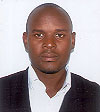Sodo is located in south-central Ethiopia and covers parts of the Gurage and Wolaita districts of Southern Nations and Nationalities Peoples Region (SNNPR). The area is 100km south of the Ethiopian capital, Addis Ababa, and has a population of approximately 97,000 people. Subsistence agriculture is the main economic activity in Sodo region. Wheat (teff), barley and potato are amongst the crops produced by households, who make their living primarily from agricultural production.


Sodo is located in south-central Ethiopia and covers parts of the Gurage and Wolaita districts of Southern Nations and Nationalities Peoples Region (SNNPR). The area is 100km south of the Ethiopian capital, Addis Ababa, and has a population of approximately 97,000 people. Subsistence agriculture is the main economic activity in Sodo region. Wheat (teff), barley and potato are amongst the crops produced by households, who make their living primarily from agricultural production.
Like the rest of the horn of Africa region, Sodo residents, for a long time, suffered the drastic effects of drought (which is strange since Ethiopia receives so much rain and supplies most of the Nile’s waters). This rendered their farms unproductive and resulted in incessant famines leaving them unable to feed themselves and they suffered food insecurity and depended on food aid.
It is against this background that an Ethiopian agronomist sought to work with the community improves the situation. He noted that deforestation had caused not only soil erosion washing away the fertile top soil but also washed down rain water downstream. This lowered the water table and made irrigation impossible. He formed the Sodo Self Help with objective of Sodo of improving food security and productivity for areas households as well as enhancing natural resource management in the locality, supporting measures to combat soil erosion and land degradation, improving management and use of available water, and assisting households to establish on and off farm enterprise. Further, Sodo also sought to improve access to directly increase farm household food and cash crop production for households in the area.
These ambitious objectives were achieved through improved local access to seed and inputs, provision of farmer training, promotion new crop varieties, support of conservation of natural resources and the rehabilitation of depleted soil, and to support rain harvesting technologies to enable farm households to produce horticultural crops under irrigation.
But the most interesting and beautiful aspect of this initiative was the fact that the people themselves worked to improve their lot. It discouraged dependency syndrome that came would food aid. For example, the farmers were taught in groups of twenty and then each farmer was expected to train twenty other people. They were also mobilized to build gabions to reduce soil erosion and ultimately raise the water table to enable irrigation. The villagers formed their own groups that they managed and policed. Naturally, there were hiccups. Some of the people who were used to food aid will naturally protest at being made responsible and accountable for work whose benefits are ‘abstract’ and not immediate. These were also solved through community group discussions and community participation.
Support was also provided for households, and particularly women, to participate in savings and credit co-operatives, to enable them to establish both on and off-farm income generating activities, while the wider community was assisted through better access to basic services, including water, education and health-care.
The results of this intervention has been amazing in the last five years. This focus on local resources and indigenous know-how as well as promotion of innovative ideas and practices has made the these people not only able to feed themselves but their economy has grown and they have, among other things, been able to build a school and a hospital for themselves with the government providing human resources. They are on the second phase now.
The people of Sodo teach us valuable lessons. They have practically proven that the most crucial component in development is always people. And if we go by the maxim that the wearer knows where the shoe pinches, then we can achieve progress by being prosumers (Teaching the consumers to produce for themselves).Second, we should not expect ‘development’ to come from outside. We have to improve our lot. This is an example worth emulating and they deserve our applause
Sam Kebongo teaches entrepreneurship at Rwanda Tourism University College.
He also is a Director at Serian Ltd that provides skills and business advisory services consultancy


